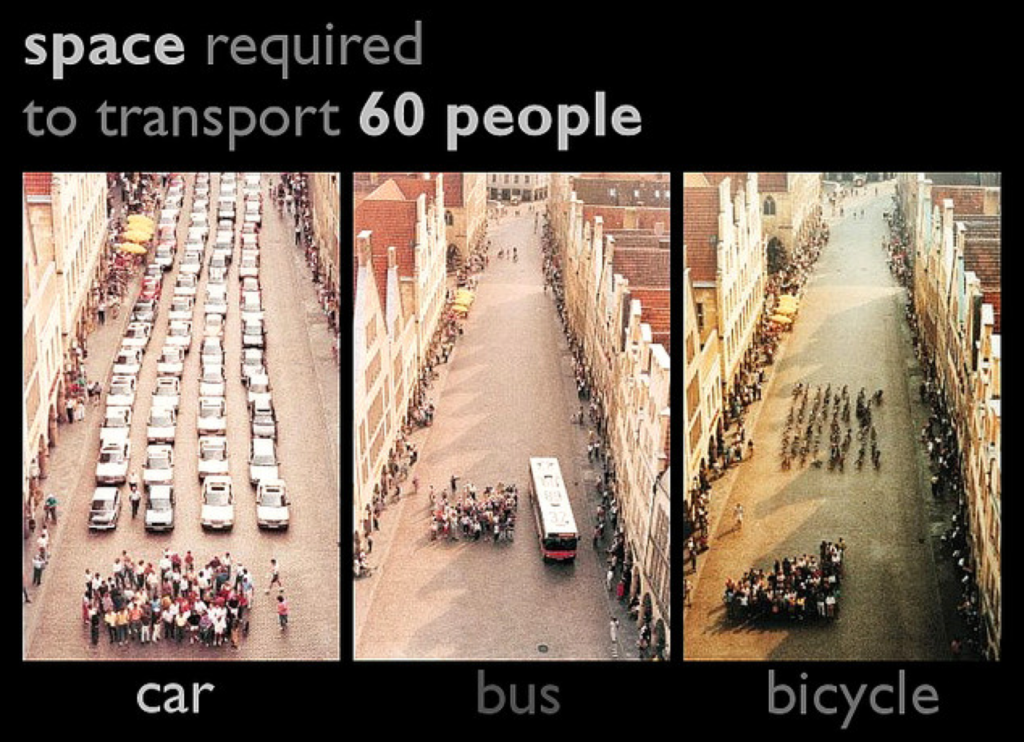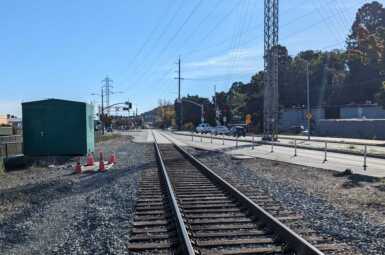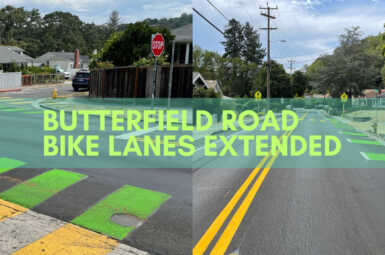Part two of our series about TAM's Innovation Workshop Government Action/Inaction Will Shape Our Driverless Future
In part one of his two-part series about the recent Transportation Authority of Marin’s (TAM) “Innovations” workshop, MCBC Policy & Planning Director Bjorn Griepenburg focused on defining two extreme outcomes that could result from the emergence of driverless vehicles, the driverless “utopia” and driverless “nightmare,” as well as their implications for the future of bicycling. In part two, below, he describes steps government officials can begin taking to ensure we move towards the better outcome.
Re-reading my notes from TAM’s innovation workshop focused on driverless vehicles in late February, it was difficult not to get excited about their potential impacts:
Shared driverless vehicles reduce congestion…Reduced congestion will increase roadway capacity…Increased roadway capacity will lead to excess public space…Excess public space will lead to widened sidewalks, bike lanes, and greenery along city streets…Parking lots will be transformed into plazas and parks…
This future could arrive much sooner than most realize. Speaking at the workshop, Debs Schrimmer of Lyft announced their goal to employ a fully autonomous fleet within five years. The reality of that five year goal seems less a matter of if, but when.
The advances made over the coming decade have the potential to solve our congestion woes in the blink of an eye, especially when compared to the decades of planning (and hundreds of millions of dollars) we spend on new freeway interchange and widening projects.
And yet, the work being undertaken to solve congestion using shared driverless vehicles has been spearheaded in the private sector by companies like Lyft. Speakers at the workshop stressed the need for local, state, and federal governments to get involved in order to shape our driverless future.
Caltrans District 4 (Bay Area) Director Bijan Sartipi acknowledged this truth in his talk, admitting that technology, rather than widened roads, will be the way to solve our congestion problems.
What can government agencies begin doing now to ensure we move towards the utopian outcome?
Explore public-private partnerships and pilot opportunities
Randy Iwasaki, the Executive Director of Contra Costa Transportation Authority, discussed his agency’s efforts to bring driverless and connected vehicle testing to the Concord through the creation of GoMentum Station, the nation’s largest testing facility.
According to the project site, GoMentum Station provides “the private sector space to innovate and test…allowing the public sector to have access to new technologies as they are being developed. This helps facilitate informed policy, regulation and planning decisions.”
This level of collaboration is particularly important in the Bay Area, which is seen as a natural testing ground with its high concentration of leading technology companies. A number of panelists predicted that driverless vehicles will be adopted sooner in the Bay Area than elsewhere, putting pressure on local and regional agencies act quickly to make policy, regulatory, and planning decisions.
In addition to catalyzing the conversation about driverless vehicles in Marin through this workshop, TAM recently announced a six-month pilot partnership with Lyft to subsidize shared LyftLine rides from SMART stations. They have also partnered with Sonoma County Transportation Authority to apply for regional funds to bring bike share to the North Bay, with an initial focus on the areas surrounding SMART stations.
Incorporate shared mobility and driverless vehicles into planning documents
Lauren Isaac, the Manager of Sustainable Transportation at a Bay Area transportation consulting firm, doesn’t see city, county, or regional bodies doing enough to plan for the arrival of driverless vehicles.
“If you look at transportation plans at all levels… those that look out 30 to 40 years, none of them even have the word ‘driverless,’” said Isaac.
Sharon Feigon founded the Shared-Use Mobility Center in hopes of fostering collaboration in shared mobility and expanding its benefits for all. Her organization recently published the Los Angeles County Shared Mobility Action Plan, a forward-thinking framework to remove 100,000 vehicles from LA County roads using policies, pilot programs, and partnerships that support transit, ridesharing, carsharing, and bikesharing.
The plan encourages stakeholders to consider the evolving role of transit and shared mobility as driverless vehicles emerge. It also provides interim transportation options that will help wean people off of private vehicle ownership and single-occupant vehicle trips. In turn, people will be much more comfortable utilizing shared driverless vehicles when they arrive, which is key to maximizing their congestion-relief benefits and heading towards the utopian scenario.
Change transportation performance metrics
Most cities continue to prioritize vehicle Level Of Service (LOS), a measure of vehicle delay, to monitor the extent to which a street is “passing” or “failing.” Of course, this is a one-dimensional metric that does not account for the quality of life, economic, safety, or environmental impacts of a roadway’s design.
Feigon advises cities to “make mobility the goal.” In other words, a street that moves cars most efficiently does not necessarily accommodate or move people most efficiently, as illustrated below.
Ryan Snyder, Principal Active Transportation Planner at the Transpo Group, also stressed the importance of roadway management in moving towards the utopian outcome once driverless vehicles arrive. He said that roadways should “reflect political priorities,” giving priority to transit, shared vehicles, emergency vehicles, and people walking and bicycling, for example.
Begin shifting transportation investments away from vehicular capacity enhancement
“In general, we cannot build ourselves out of congestion,” said Caltrans District 4 Director Bijan Sartipi.
Sartipi was likely referencing the phenomenon of induced demand, an economic principle that explains why added roadway capacity almost always results in increased driving.
According to Sartipi and several panelists, the solution will be through the emergence of shared driverless vehicles and more effective lane management.
Jon Haveman, Principal with Marin Economic Consulting LLC, also cautioned against the public’s tendency to push for projects that increase freeway capacity. He indicated that the impending congestion relief provided by driverless vehicles means that elected officials and government agencies need to greatly shorten the timeframe over which they consider the rate of return for these costly projects.
This, of course, could have transformative impacts on transportation spending, possibly leading to major funding increases for bicycle infrastructure.
What Does it All Mean for Bicycling?
While this article did not specifically address the role of bicycles in the driverless and shared vehicle revolution, it is important to consider changes in the transportation ecosystem that could have a profound impact on how streets are managed and transportation dollars are spent.
It is often politically difficult to make changes to roadways that eliminate or narrow travel lanes and/or on-street parking in order to accommodate bike lanes. What we heard from panelists, however, is that our obsession with wide, free-flowing roads may soon be antiquated by the congestion relief benefits associated with shared driverless vehicles. In turn, the public dollars required to build and maintain those roads and freeways could go elsewhere.
This shift is all about efficiency–fewer empty seats in cars, less human error behind the wheel, better use of public space. It is crucial, then, that the bicycle–the most efficient machine ever invented–has a role in what’s increasingly becoming a network of transportation options.
Whether we maximize the benefits of driverless vehicles depends largely on the extent to which our elected officials and government agencies take a proactive role in planning for their arrival. MCBC will monitor local efforts to address transportation innovation and provide updates as necessary.




